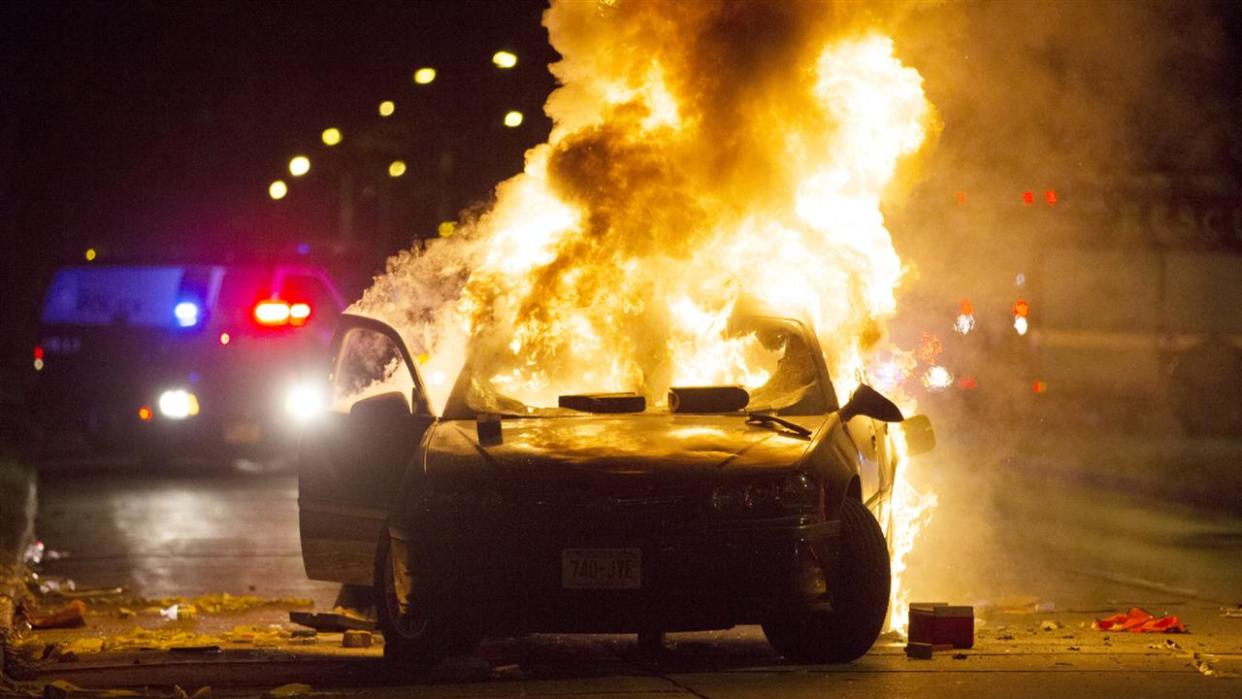‘Pics or it didn’t happen’ puts increased pressure on cops to release body-cam video in police shooting cases

“Pics or it didn’t happen.”
It’s a popular response on the Internet when someone makes an extraordinary or unverifiable claim.
But in many ways, it’s also become the voice of the public in the aftermath of officer-involved fatal shootings. Increasingly, citizens want video proof before they’ll accept what authorities tell them about police shootings. The demand is creating a Catch-22 for police chiefs trying to juggle the public’s right to know, officer safety and the integrity of a criminal investigation.
“Police departments in major cities across the country are aware of the delicate balance between what the community needs to know … and the criminal justice process,” Milwaukee Chief Edward Flynn said the day after an officer-involved fatal shooting sparked rioting in his city earlier this month.

Milwaukee, like a growing number of U.S. cities seeking better accountability and transparency, requires its officers to wear body cameras. The camera on patrolman Dominique Heaggan-Brown’s uniform was recording on Aug. 13 when he shot and killed Sylville Smith during a foot chase. Two other officers on the scene were also wearing body cameras.
A day after the shooting, Flynn described to reporters what he saw on the video.
“The individual was armed,” the chief said. “The individual did turn toward the officer with the firearm in his hand. You can’t tell when the officer discharges his firearm.”
The video hasn’t been released to the public, nor will it be anytime soon.
“Release of the videos would compromise the integrity of the investigation,” Wisconsin Attorney General Brad Schimel told reporters Monday. Schimel, head of the state’s Department of Justice, which is leading the probe, said the footage most likely won’t be shown to the public unless charges are filed.
That decision isn’t sitting well among residents and activists.
“What the video depicts already has been described by local authorities, and keeping it from the public only fuels speculation on what it reveals,” the Milwaukee Journal Sentinel wrote in an editorial last week. “More harm in the form of unwarranted speculation can come from not releasing the video than from releasing it. Tensions in the Milwaukee community remain high.”

Milwaukee officials want the video released as soon as possible, but are at the mercy of state investigators. Some argue the police chief is already forming public opinion by discussing what he viewed on the cameras.
To release or not release has been a source of scrutiny in recent years, and the fact that seven sessions at an upcoming national conference for police chiefs will be devoted to body cameras is reflective of the increased spotlight on the issue.
“When there is an officer-involved shooting, I think police departments should err on the side of releasing that footage after they’ve made sure privacy concerns are protected,” Kami Chavis, a Wake Forest University law professor recently told Time. “There’s been so much distrust and a history of tensions between some communities and police. This can help the public in terms of increasing transparency.”
There is no national policy on when a police department must release body camera video. Footage is generally considered public information under state freedom of information laws, with the exception for video that is part of an ongoing investigation.
“One size does not fit all here,” Philip Hilder, a Houston defense attorney, told Yahoo News.
The Chicago Police Department — which has been plagued by police abuses — recently surprised many by releasing body camera video just eight days after an officer fatally shot an unarmed black teenager. Milwaukee’s chief called Chicago’s release a “modern record.”
A new Chicago policy calls for such material to be made public within 60 days. That change and other reforms represent the city’s effort to restore citizen confidence in the police department after video released last year showed a black teenager, Laquan McDonald, being shot 16 times by a white officer.
“Simply put, the longstanding policy the city followed for decades is out of date and this new policy strikes a better balance of ensuring transparency for the public while also ensuring any criminal or disciplinary investigations are not compromised,” Chicago Mayor Rahm Emanuel said in February.
Making the Milwaukee shooting video public won’t answer all the questions about what happened, the attorney general said.
“They give only a narrow and incomplete glimpse of the overall picture,” Schimel said.
Hilder, a former federal prosecutor, said the premature release of video could also create more questions.
“Often times there is a lot of activity that occurs outside the view of the video — also before and after the video,” he said. “Video can be illuminating, but it can be very misleading as well.”
Jason Sickles is a national reporter for Yahoo News. Follow him on Twitter (@jasonsickles).

